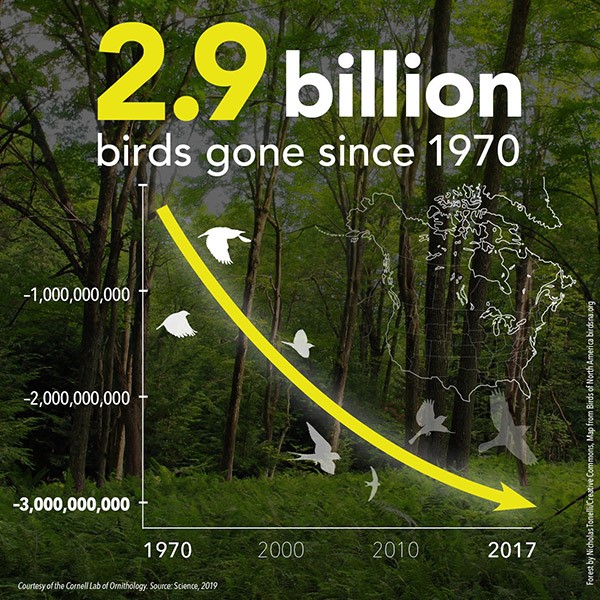 Photo ©
Cornell Lab of Ornithology
Photo ©
Cornell Lab of Ornithology
Can We #BringBirdsBack?
A study published last week in the journal Science reveals that since 1970, bird populations in the United States and Canada have declined by 29 percent, or almost 3 billion birds, signaling a widespread ecological crisis. The findings show that of nearly 3 billion birds lost, 90 percent belong to 12 bird families, including sparrows, warblers, finches, and swallows—common, widespread species that play influential roles in food webs and ecosystem functioning, from seed dispersal to pest control.
Yet amid the bad news, the study also documents a few promising rebounds resulting from galvanized human efforts. For example, raptors such as the Bald Eagle have made spectacular comebacks since the 1970s, after the harmful pesticide DDT was banned and recovery efforts through endangered species legislation in the U.S. and Canada provided critical protection.
This study was made possible by contributions of citizen scientists over 50 years, as well as 10 years of weather radar data which detects birds on migration. Please read the full story to get actionable tips that you can use to help #BringBirdsBack.
 Photo ©
Photo ©